Carbon is the element of life, the chemical basis of all known life-forms. It is the fourth most abundant element in the universe, and the second in the human body, after oxygen. It is the unique and, indeed, astonishing properties of carbon that make life possible. With four electrons available for covalent bonding, carbon forms an unimaginable diversity of complex organic compounds, with more than ten million described to date; and yet that figure is only a tiny fraction of the number theoretically possible. It has an unusual ability to form polymers — macromolecules with repeating sequences, such as DNA — at temperatures experienced on earth. Its physical properties vary widely in allotropic forms as distinct as graphite and diamond: soft and hard; opaque and transparent; conductive and insulating. Carbon will not ionise under any except implausibly extreme conditions, and its allotropes are thermally conductive, thermodynamically stable and chemically resistant. Taken together, these properties make carbon the foundation of the entire, rich, complex and beautiful biosphere of this planet.
Like all heavy elements, carbon is forged in the photospheres of stars.1 But when the British scientist Fred Hoyle came to this element in his ground-breaking work on stellar nucleosynthesis, he found himself faced with a conundrum: carbon should not exist. That is, it should be transformed instantaneously into oxygen on coming into existence. After exhaustive analysis he discovered there just might be a solution to the riddle of the persistence of carbon, but only if a very specific value was assigned to the parameters of the carbon-12 isotope: i.e., a resonance level at 7.65 MeV (million electric volts) above its ground state.
In 1945, Hoyle was on sabbatical from Cambridge University, having completed his secondment in Britain’s radar research program during the war years. On a visit to Caltech, he managed to persuade nuclear physicist William Fowler to put together a team from Pasadena universities to design an experiment using particle colliders and an over-sized mass spectrometer at Caltech. The Americans were sceptical of Hoyle’s outrageous claim, but, incredibly, the exact value Hoyle had predicted was confirmed, and the result led him to a mind-blowing epiphany.
“I do not believe,” he wrote later, “that any scientist who examined the evidence would fail to draw the inference that the laws of nuclear physics have been deliberately designed with regard to the consequences they produce inside the stars.”
Carbon is the impossible element, and the miracle of life begins with physics.2
Hoyle had been up until this point a resolved and somewhat militant atheist, expressing sceptical and even satirical views towards Christianity, Creationism, and the ‘Big Bang’ (his phrase) theory advanced by the Roman Catholic priest Georges Lemaître. But now the astrophysicist became one of a number of scientists who started to advance the teleological argument — that physical parameters governing the condition of the universe are fine-tuned to very specific values which enable not only the genesis of life, but of astronomical structures, diverse elements, chemical bonds, and even matter itself. Without 7.65 MeV carbon, life could not exist. For Hoyle, the very existence of carbon was proof of intelligent design in physics.
And that’s probably about as far as empirical science can take us. Hoyle, for one, did not default to belief in anything resembling an anthropomorphic God. Instead he adopted a position consonant with ancient philosophy in both its Eastern and Western branches — that the universe itself is intelligent: and therefore, a priori, alive and conscious. As the Stoic philosopher Chrysippus of Soli wrote, in his De Nature Deorum: “The universe itself is God.”
With any other element, Hoyle’s epiphany would perhaps not have had quite such an impact on the scientist. It was the fact that the miracle concerned carbon, whose unique properties make it the only possible platform for the phenomenon of life itself, that forced a decisive paradigm-shift in his thinking. His worldview expanded, as it must, to accommodate the previously impossible.
Hoyle lived until 2001. It must have been a very strange experience, then, to witness the rise of the political climate movement with its weird demonisation of his divine molecule. He didn’t get heavily involved in the debate, but I think we can assume without too much presumption that he would have been content to trust the intelligence of an evolved planetary system within an intelligent universe. He made occasional interventions in the infant science of climatology — for instance to dispute the way the so-called ‘greenhouse effect’ was calculated — but for the most part the astrophysicist was focused on higher things: on origins; of the universe, of life, of religion.
Hoyle went on to make powerful arguments for intelligent design in biology. It must be stressed that these are disciplinary arguments, not from faith but from mathematics. He ridiculed, with his usual gift for memorable images, the notion of abiogenesis of life on this planet: the accidental emergence of the first living cell, he said, was comparable to the likelihood that “a tornado sweeping through a junkyard might assemble a Boeing 747 from the materials therein.” (The Intelligent Universe, 1984). The probability of obtaining even a single protein through chance combination of amino acids was about as likely as a solar system full of blind men solving Rubik’s Cubes simultaneously.
Watson and Crick’s contemporaneous discovery of the double helix structure of DNA (1953) consolidated the work of a number of scientists, particularly Erwin Chargaff’s 1950 discovery that the nucleotide composition of DNA varies among species, and that the same nucleotides do not repeat in the same order, as previously thought. It was now clear that the sequence of nucleotides determines the proteins produced. The teleological inference was left to others to make, but pervasive in Crick’s continuing work on the information flow from DNA to RNA to protein is the concept of coding — that nucleotide sequence constitutes a quaternary code, comparable to but vastly exceeding in complexity the binary code used in digital technologies. Code is language; and according to all of our knowledge and experience, there is only one possible source for language — that is, intelligent mind. The Rosetta Stone was not carved by the wind.
Carbon dioxide is one of the four pillars of the life cycle, the other three being oxygen, water, and sunlight. All life on earth depends ultimately on photosynthesis, by which atmospheric carbon is bound into living forms and oxygen released into the atmosphere.
The constant flux observed in Earth’s dynamic, turbulent atmosphere — and this was James Lovelock‘s Gaian epiphany — is what marks it as a living planet: only a dead planet such as Mars has an inert, unchanging atmosphere. But within this dynamism Lovelock discerned what he called a ‘universal cybernetic homeostatic tendency’ — the physical and biological negative feedbacks which time and again throughout its history have restored the balance of the system. Gaia theory posits that there is more to natural selection than the ‘survival of the fittest’: that the ‘fitness’ of species to survive includes their contribution to the homeostatic tendency of the whole system.
CO2’s thermal contribution to the climate is vital at lower levels, but vanishingly small above 400ppm. By far the most important ‘greenhouse gas’ is water vapour. Water in the atmospheric phase of its cycle composes around 70% of all greenhouse gases and creates about 95% of the greenhouse effect. CO2 plays a much smaller role, and its warming effect diminishes as more is added. Atmospheric temperature exhibits a logarithmic — not arithmetic! – dependence on carbon dioxide levels, as described by the Schwarzschild equation for radiative transfer — that is, the warming effect declines rapidly with increased concentration, until saturation is reached at around 1200-1600 ppm. This means that there can be no ‘tipping point’ in terms of atmospheric carbon; that’s why no ‘runaway warming’ is observed in the history of the earth, despite enormously higher levels of CO2 in the past. Dr William Happer recently used the Schwarzschild equation — which is not scientifically disputed, even by the IPCC, merely politically ignored — to confirm that a doubling of atmospheric carbon dioxide leads to a reduction of only 1% in radiative transfer to outer space, and a warming of only 0.71 degrees.
Over the entire industrial period, during which we have certainly seen an uptick in atmospheric carbon dioxide, we have seen a net warming of less than one degree Celsius, which, as Nobel Prize winner in Physics (1973) Ivar Giaever has pointed out, actually represents a remarkable degree of stability.
That uptick, whether caused by humans or not, is something to be welcomed, since for the past several million years, planet Earth has been in a carbon drought. Plants grow best with atmospheric CO2 at above 1000 parts per million. At the beginning of the industrial period the levels were around 260ppm, which is very, very low. During the last glaciation, levels fell to 180 ppm, perilously close to the limit of around 150 ppm below which plants cannot survive. The recent rise to around 410 ppm gives us a very small cushion of safety, but if temperatures should drop — during a solar minimum, for example — that danger persists, and the situation could change very rapidly.
Viewed in this light, the Industrial Revolution came not a moment too soon. For all the damage the species does in other ways, the human contribution to atmospheric CO2 is not a problem. CO2 is a trace gas, constituting 0.041% of the atmosphere by weight (ppm), and considerably less by volume (ppmv). Although humans produce only around 3% to 4% of CO2 present in the atmosphere — less than 15 parts per million, or 0.0015% — this small but vital contribution to the planet’s homeostatic tendency is actually our saving grace. As the planet has begun, tentatively, to recover from its three-million year CO2 famine, we have seen a rapid global increase in vegetation, a greening especially of arid areas, as clearly shown by satellite imagery. Studies done by CSIRO, the Commonwealth Scientific and Industrial Research Organisation, reveal this trend, and their figures are confirmed by NASA. Leaf cover has increased by more than 20% in semi-arid areas worldwide. And that, in a nutshell, is the greenhouse effect — the only effect of rising atmospheric carbon that should concern us.
That statement will shock many who are in thrall to ‘Climate Change’ propaganda, but it is what the historical record tells us, using climate reconstructions based on the reliable proxy of ice-core samples. Over the last 650,000 years, as highlighted by Albert Gore in An Inconvenient Truth (2006), we can indeed observe a correlation between warm periods and higher atmospheric CO2. But, in the same record, we can see that increases in temperature come first, preceding increases in carbon dioxide.
It’s easy to understand why. Surprisingly, the oceans release CO2 as they warm. Cooling water absorbs, and warming waters exhale, the gas of life. This is just one of the counterintuitive, fine-tuned properties of water which continue to emerge. But the fact is that when the conditions exist for more life — that is, when it is warm — the oceans provide the raw material, the carbon and the oxygen. Oceans warm more slowly than landmass, so this doesn’t happen overnight; there’s a lag of at least 800 years between rising temperatures and rising CO2.
Warm conditions are good for life, and when it is warmer life proliferates across the surface of the planet, enhancing the carbon cycle. This is partly because increased availability of CO2 confers drought resistance in plants, enabling them to use water more efficiently, since they need to open fewer and smaller stomatic apertures to absorb the gas, losing less water to evaporation in the process. And (obviously) higher carbon dioxide massively boosts photosynthesis (ie growth), which is why farmers pump the gas into greenhouses from special generators or engine exhausts. Levels of 800 to 1200 ppm lead to 40-60% increases in yields. In the open air, while fertilisers and water can be increased, atmospheric CO2 is always the limiting factor on growth. The higher availability of atmospheric carbon, it turns out, has a very small effect on temperature and a very large one on plant growth.
In recent years the ‘CO2 fertilisation effect’ has brought huge gains in agricultural yields which have led to an spectacular global decline in extreme poverty. We would thrive in a carbon rich atmosphere, along with all other species. There is no such thing as an excess of atmospheric CO2 in any practically conceivable scenario; higher atmospheric carbon, in fact, is the key to ending world hunger.
But it seems there are those among us who do not want to see that happen; who indeed would regard it as a catastrophe, undermining their power at the top of a hierarchical society dependent on artificial scarcity.
Are you feeling it yet — the carbon epiphany?
Earth’s climate has always changed, and the source of its inseparable beauty and turbulence lies in its physical relationship to the sun, which provides 99.96% of all the energy driving its climate system (Kren 2015). Solar activity is not constant: the energy it produces and transmits is in a cyclic state of flux. The energy reaching the top of the earth’s atmosphere is not constant, either; it is affected by the tilt of the earth, which is not constant, and the eccentricity of the planet’s orbit, which means, crucially, that its distance from the sun is not constant. The sunspot cycles and magnetic field fluctuations which govern cloud-cover variation affect how much of that energy gets through to the planet’s surface. The cloud-cover fraction — the proportion of the earth’s surface under cloud — is not constant (see Clauser’s 2023-4 interventions in the debate), which means that the albedo effect — the amount of solar radiation reflected back into space — is not constant. It is difficult to identify any factor in climate that is. Panta rhei, as the Pre-Socratic philosopher Heraclitus told us two and a half thousand years ago — everything flows.
The Bray and Eddy solar cycles map the fluctuating intensity of the sun’s radiative output, and the Milankovitch cycles determine how much of that energy reaches the top of the atmosphere (TOA) at any one time. Then there are the Feynman and Schwaab sunspot cycles. We know that a more or less active sun corresponds with fluctuations in the solar magnetic field and the Earth’s magnetic shield, prohibiting or permitting greater or lesser penetration by the cosmic particles which nucleate cloud (Friis-Christensen and Lassen 1991, Svensmark 2007), and thus govern cloud variation and the albedo effect, one of the Earth’s most fundamental homeostatic mechanisms.
Historical climate change cannot be reconstructed using atmospheric carbon levels, but it can be done using the Bray and Eddy solar cycles, as the meteorologist John Shewcuck illustrates here.
Likewise, the Milankovitch orbital/rotational cycles can be used to reconstruct the history of Earth’s ice-ages. Three cycles are defined in his equations: ‘Precession’, ‘Obliquity’ and ‘Eccentricity’. The poles precess in a slow circle (the Precession of Equinox). The axis of rotation of the Earth is not perpendicular relative to the sun’s rays and the tilt changes (Obliquity). The Earth’s orbit around the sun is not circular, but elliptical, and the planet can therefore be closer to the sun, as now, or further away.
These orbital and rotational cycles can be not only be used to reconstruct the history of glaciations, but can be used in concert with radiometric dating to create high resolution astrochronologies: i.e., the dating of sedimentary units by calibration with astronomically tuned timescales.3 Thus the primacy of these orbital and rotation cycles over the Earth’s climate on both the macro and micro levels is exceptionally well established at a truly granular level of detail.
The oceans are warmed not by conduction from the atmosphere but, like the land, directly by solar irradiance, and this energy only penetrates the deeper ocean through convection. The decadal and multi-decadal oscillations of Atlantic (AMO), North Atlantic (NAO) and Pacific (PDO) ocean currents are not yet fully understood, but we know that deep ocean convection cycles are very slow, in some cases operating over thousands of years.
The climatogenic cycles operating across tens, hundreds, thousands, tens of thousands and hundreds of thousands of years can never be affected in the slightest by even the most megalomaniacal of human plans. The positive and negative interference patterns of these overlapping cycles are, prima facie and a posteriori, what takes the planet into and out of ice ages, and nothing we do, least of all tinkering with 0.0015% of the Earth’s atmosphere (anthropogenic carbon dioxide) is going to ‘stabilise the climate’ on this turbulent planet. It’s as delusional as trying to stop winter by pinning all the leaves back on the trees.
So how can this happen? How can there be such a wide consensus, such concerted political will behind the war on carbon, if anthropogenic global warming theory is such a travesty?
Dr William Happer invokes Charles MacKay’s Extraordinary Popular Delusions and The Madness of Crowds to explain the phenomenon. Professor Richard Lindzen gives very interesting inside perspectives on the progressive tightening of the alarmist stranglehold within academia and the IPCC (on which he served as a lead author in the late 1990s). These insights are highly relevant, but in fact there also exists a quite explicit record of top-down political manipulation of the issue.
The early ice-core surveys did indeed reveal a correlation between temperature and carbon dioxide, attracting the interest of the oceanographer Dr Roger Revelle, who posed the question whether our industrial generation of atmospheric carbon dioxide might become problematic over time (Suess–Revelle, 1957).
The hypothesis was exhaustively investigated but proved unproductive. As further ice-core surveys provided more data points, it became clear that atmospheric carbon dioxide levels follow, rather than precede, fluctuations in temperature. In fact the record frequently shows a complete decoupling of any relationship between carbon dioxide levels and temperature. Indeed, the planet has experienced six ice-ages when CO2 was at high levels.
After more than three decades of collaborative study, Revelle put his name to an article (“What to do about greenhouse warming: Look before you leap”, co-authored with Fred Singer and Chauncey Starr) which argued that the hypothesis remained unproven, and advised that it should not form the basis for drastic action.
According to Lindzen, and as documented in contemporary surveys by Gallup, this was not at all a minority view at the time, but represented the view of the vast majority of those working in the field — i.e., geophysicists and meteorologists — that there was no evidence of danger from CO2 emissions. Time Magazine’s “ALL SCIENTISTS AGREE” cover of September 1988 was pure fiction.
Revelle died in 1991, the same year as the Council of the Club of Rome’s The First Global Revolution; the published article appeared, after peer review, the following year. The response of one of the professor’s former students, a certain Albert Arnold Gore, was to claim that Revelle had ‘gone senile’ before his death. And this nasty, personal tone still saturates the debate about anthropogenic climate change, three whole decades later. There was even an attempt to question whether Revelle had collaborated on the article at all, and a scurrilous implication that he had been somehow tricked or inveigled into putting his name to it.
However, Revelle had come to the same conclusions years earlier: “We must conclude,” he had written in November 1982, in a Letter to the Editors of Scientific American, “that until a warming trend that exceeds the noise level of natural climatic fluctuations becomes clearly evident, there will be considerable uncertainty and a diversity of opinions about the amplitude of the climatic effects of increased atmospheric CO2. If the modelers are correct, such a signal should be detectable within the next 10 or 15 years.” (Volume 247, Issue 5).
Well, the models will say whatever you want them to say, under torture. How do you torture a climate model? By depriving them of key variables. By amputating the astrophysical aspects such as the Bray, Eddy and Milankovitch cycles; by crunching together data sets to falsify the record (Mann); and by completely excising the Schwarzschild radiative transfer equation. Then they’ll sing like birds, and you can create infantile linear projections showing the greenhouse effect going to the moon, or to Venus.
In any case the political die was already cast. The UN’s Intergovernmental Panel on Climate Change (IPCC), instituted in 1988 on a brief to assess only human causes of climate change, ignored Revelle’s call for caution and promoted the idea of a climate emergency too urgent to allow time for any further debate: the so-called precautionary principle.
By limiting its research to human causes, it puts conclusions before argument, reversing logical procedure, and presents a detail as the whole picture, as embedded in its ‘Principles’. The IPCC uses the prestige of science to claim political authority while flouting the scientific method at every step. It promotes fraudulent studies such as Dr Michael Mann’s ‘hockey-stick’ reconstruction of climate history. It routinely publishes its Summaries for Policymakers before its working groups have finalised their reports, cherry-picking or even altering its own scientists’ conclusions. Serving scientists have to support the consensus or shut up; there are no minority reports. In its administrative methods, therefore, it cannot be described as a scientific body, although it uses scientists — and ‘uses’ is the right word, as a number of participants found out. When leading scientists resigned in protest at the constitution and procedures of their committees, the IPCC continued to attach their names to its Assessment Reports, and could only be prevented from doing so by individual legal action. The fullest account of the corrupt behaviour of the IPCC bureaucracy is provided by Christopher Booker in his 2009 book, The Real Global Warming Disaster.
In 1991, the Club of Rome, the elite think-tank behind the United Nations’ environmental policy, published a report entitled The First Global Revolution, addressing what it called “the Human Malaise” and exploring strategies for “world survival” and transition into a new era. By mobilising governments for “environmental security”, i.e. decarbonisation, it plans to move the world “from a military into a civil economy”, i.e. global disarmament under a world government. The report contains an astonishingly frank admission of the political function of the climate change agenda:
“The need for enemies seems to be a common historical factor. Some states have striven to overcome domestic failure and internal contradictions by blaming external enemies. The ploy of finding a scapegoat is as old as mankind itself — when things become too difficult at home, divert attention to adventure abroad. Bring the divided nation together to face an outside enemy, either a real one, or else one invented for the purpose.
In searching for a common enemy against whom we can unite, we came up with the idea that pollution, the threat of global warming, water shortages, famine and the like, would fit the bill. In their totality and their interactions these phenomena do constitute a common threat which must be confronted by everyone together. But in designating these dangers as the enemy, we fall into the trap, which we have already warned readers about, namely mistaking symptoms for causes. All these dangers are caused by human intervention in natural processes, and it is only through changed attitudes and behaviour that they can be overcome. The real enemy, then, is humanity itself.” (p 115)
The style of the passage is incompatible with the style of the rest of the book, not least in the way it abandons the mask of objectivity in a sudden switch to first-person narrative with the adoption of the informal ‘we’. These two paragraphs completely invalidate the rest of the report by revealing, without a shred of ambiguity, the political — not scientific — motivations behind it, and the nature of its ‘Global Revolution’.
Both in style and scope the passage appears to have its roots in a leaked think-tank report entitled On the Possibility and Desirability of Peace, which was released by an independent publisher under the title The Report from Iron Mountain (1967).4 The Iron Mountain committee was tasked with precisely the question broached by the Council of the Club of Rome — how to find a new enemy against which all nations can unite — and assesses a range of possible surrogates for the non-military functions of war in human culture and society, most saliently as the ultimate, foundational source of political authority.
“The great challenge in moving to a condition of permanent peace and universal disarmament would be to find replacements for the non-military functions of war. War sustains scientific and technological advancement, cultural paradigms, and the ‘ecology’ of human society; above all it alone creates political authority, and preserves the hierarchical structure of society, including the widespread poverty which is essential for an elite still dependent on human labour.” (From The Real Enemy)
So, for example, the report considers a number of options, even including the proposal of a simulated alien invasion — before shelving it as technologically impractical at that time. But it takes very seriously the candidacy of a contrived threat of environmental catastrophe as the new enemy-image, noting that ongoing environmental degradation would need to be deliberately exacerbated and accelerated in order to achieve the aim. One drawback, it notes, might be the lack of a sense of an immediate threat to personal safety. The latest attempt to fill this gap is the transparent science fiction repeated by globalist figureheads like Bill Gates, Klaus Schwaab and Anthony Fauci to link the emergence of new zoonotic pathogens to climate change, an idea which is lapped up by a public that grows more gullible with every new scare.
The anomalous passage in the Global Revolution document appears to reflect an executive decision on the possibilities presented in the conclusion of the Iron Mountain report — to go with environmental collapse as the new, unifying enemy-image, masking the real target: “humanity itself”. Since the first fruits of this decision would have been The Limits to Growth (1972), this decision must have been taken fairly promptly upon the delivery of the Iron Mountain report. Why the Council felt the need to include such a frank confession of the political motives behind the anthropogenic global warming construct is another question. It certainly suggests that by 1991 it was confident enough to indulge in a little ‘revelation of the method’.
Through selective governmental funding and led by the IPCC, the globalists promoted heavily manipulated science to spread fear of an impending catastrophe triggered by the extraction of energy from hydrocarbons, whether by burning wood, coal, oil or methane gas. Through international treaties, taxes, and cap-and-trade carbon exchanges, they hoped to inhibit and ultimately reverse the addition of life-giving CO2 to the atmosphere by the human gift of fire, while using their obsessive demonisation of carbon emissions to distract attention from rampant corporate over-exploitation, pollution and desecration of every habitat on Earth — and all the while, of course, enriching themselves obscenely.
Only once the campaign was well underway did the manipulators make public their declaration of war against humanity at large, in the Club of Rome’s 1991 publication. The aim, explicit in the UN’s Agenda 21 and 30 policy documents, is to shut off humanity’s access to hydrocarbons, the source of 98% of the world’s energy at current technological levels, and crucial to Third World development. Carbon, the element of life, is identified as a pollutant, specifically in the atmospheric form by which it sustains all life on this planet through photosynthesis. The idea that atmospheric carbon dioxide drives climate is a knowing perversion of the facts; it is war propaganda. And it leads to tortured contradiction: if carbon dioxide, the root of all life, is a pollutant, then life itself is pollution. That seems to me a mockery; a Satanic inversion.
Outrageous though it is, this kind of abuse of science is not unprecedented, and we don’t have to go back to Galileo to illustrate it. We find clear precedents for the doctrinaire imposition of politicised pseudo-science in twentieth century totalitarian regimes. In Hannah Arendt’s The Origins of Totalitarianism, it is a major feature of both the Soviet and Nazi systems.
“Science in the instances of both business publicity and totalitarian propaganda is obviously only a surrogate for power. The obsession of totalitarian movements with ‘scientific’ proofs ceases once they are in power. The Nazis dismissed even those scholars who were willing to serve them, and the Bolsheviks use the reputation of their scientists for entirely unscientific purposes and turn them into charlatans.” (The Origins of Totalitarianism, 1951, p345).
Whereas today we might use the word ‘scientism’ to describe such unscientific attitudes to science, Arendt’s term is ‘scientificality’ (on the model of ‘theatricality’, for example).
“Totalitarian propaganda raised ideological scientificality and its technique of making statements in the form of predictions to a height of efficiency of method and absurdity of content because, demogogically speaking, there is hardly a better way to avoid discussion than by releasing an argument from the control of the present and by saying that only the future will reveal its merits.” (p346)
What better description of the tactics of contemporary climate alarmism could one possibly find?
Yuval ‘Noah’ Harari, World Economic Forum ideologue and author of Sapiens and Homo Deus is quite matter-of-fact about it: “Science is not really about truth,” he has said in interview, “it’s about power.”
This commitment to a hollow, politicised pseudo-science is a clear sign that we are on the cusp of a steep plunge into totalitarianism, which always enforces strict adherence to some psychotic narrative or other, some master fiction impossible to believe but heretical to question.
Those who stand against the deception are castigated as ‘climate deniers’, amid periodic calls for their arrest and punishment. One of the most fanatical priests in this new inquisition is Dr Peter Carter, a medical doctor by training, and nevertheless an ‘expert reviewer’ for the IPCC. Applauding the Pope’s 2015 encyclical letter calling climate change ‘a sin against God’, he condemns scientific dissent on climate change as ‘evil’, an ‘unprecedented crime’ of ‘extreme immorality’, and urges criminal prosecution of the heretics. And what punishment could ever be enough, since climate deniers according to him will end up killing literally everyone. In Carter’s upside-down world, we have ‘no future’ if we don’t reduce our CO2 emissions to near zero. He believes it may already be too late, and fears we may already be committed to an ‘uninhabitable planet’.
Indeed, in his view, reducing emissions is not enough: we must actively remove existing CO2 from the atmosphere. The gas of life must be ‘sequestered’ — that is, locked away where it can do no further harm. When you understand that trees and plants themselves sequester carbon, this appears a somewhat redundant idea. If you want to take carbon out of the atmosphere, just plant trees; the higher carbon in the atmosphere will speed their growth. The carbon activists call this ‘biological sequestration’ — as if the very purpose of plant-life is to save us from CO2. But Earth needs its forests, just as much as it needs its seas. It needs great oceans of forest — oceans and forests are the twinned lungs of the planet, breathing oxygen into the atmosphere. Forests are what the carbon dioxide is for.
But biological sequestration is not good enough for Carter and the priesthood, because trees drop their leaves and die and rot, and their wood is burnt for fuel and in forest fires, and so the carbon is released back into the cycle. The answer, then, is to use the trees as biological sequestrates to pull the carbon from the atmosphere — let them do something useful for once! –- and then cut them down and burn them in ovens, taking care to capture the CO2 which we then bury in great underground caverns — so-called ‘geological sequestration’.
Is this insanity, or something else?
Forest coverage is greater now than it was 150 years ago. The industrial revolution was powered by coal. Without coal, Europe would quickly have been denuded of trees to feed industrial processes. It was coal that saved the forests. (This is not to say that deforestation is not of intense concern. While deforestation is slowing down and even reversing in terms of total land area, most of the tree canopy loss is still from primary forest — tropical rainforest and other biologically diverse biomes.)
But fossil fuels are anathema to the ‘environmentalists’, and coal-fired electricity generation is being abandoned and suppressed across the Western world. Coal and oil are considered worse than wood, since burning them releases carbon which has been geologically sequestered for millions of years. Thus we arrive at the absurdity of a 3,900 megawatt power plant in Northern England — Drax Power Station, near Leeds in Yorkshire — which has converted from coal to ‘biomass’. This euphemism masks the madness of feeding a modern power station with 70,000 tons of wood per day, and an estimated total of 7.5 million tons annually. To sustain its output, this ‘ultra-modern’ power station requires 1,200,000 hectares (12,000 km2) of forest to supply it on a continuous basis. Most of this is imported in processed wood pellets from North America, although some is domestically sourced from willow trees.
Because of the unreliable nature of wind-power generation, wind farms need power plants to support their output — into which more and more ‘biomass’ will be fed as the turbines march across more and more of the landscape. In addition, since solar power and wind are such diffuse sources of energy, requiring the dedication of large areas of land, deforestation is a concomitant of their wholesale adoption. In Scotland, for instance, 13.9 million trees were felled in the years 2000-2019 to make space for wind-power installations, according to information supplied by Scottish Forestry — an area of 6,994 hectares (70 km², 17,283 acres).
Is this environmentalism, or a war on trees?
In terms of geological time spans, atmospheric carbon is very nearly as low as it has ever been in the history of the planet. When plants evolved, it was at least ten times higher — all that carbon waiting to be bonded into the great oceanic forests. With the planet only now beginning to emerge from its CO2 famine, and temperatures plateauing out and beginning to fall, the geological sequestration of carbon is so absurd a plan that it can only be insanity — or Satanity, one or the other — a sick, Satanic joke.
And in the end, although I can hardly believe I’m writing it, the priests of this church of Satanic inversion — most recently one William Henry Gates III — tell us that to propitiate the gods of climate we must dim the sun itself. How? With artificial clouds, a screen of cirrus nucleated by particles ‘injected’ into the stratosphere. Solar Radiation Management, they call it, euphemistically. Not sunlight, but ‘solar radiation’; not global dimming, but ‘radiation management’.
Actually, they’ve been talking about it for a long time: from Edward Teller in the 1950s to David Keith of Harvard in the 2010s. But the amazing thing is that while they were talking, the sun-screen has gone up all by itself. We didn’t have to build it, it was just suddenly there! An artificial albedo of reflective particles has magically constructed itself in the sky, whitening the blue, and significantly diminishing the amount of sunlight reaching the surface.
Some of this atmospheric sunscreen comes from JP8 jet fuel, which was introduced across the board in both civil and military aviation during the 1990s. JP8 contains a wide range of metallic additives, including aluminium, calcium, magnesium, sulphur, titanium, iron, tin, and potassium, and trace elements of barium, chromium, copper, lead, manganese, nickel, niobium, scandium, selenium and vanadium, in amounts magnified by hundreds of thousands of commercial flights per day.
These elements are added to fuel in nano-particulate form, making them extremely potent. The particles nucleate cirrus clouds — exactly the artificial albedo proposed by scientists like David Keith. By 1997 the military and commercial transition to JP8 was complete — and interestingly, the first observations of ‘chemtrails’ date from 1997-98. JP8 fuel lays down the pervasive ambient pollution (the milky-white skies) enabling military applications such as 3D over-horizon radar systems, over which other geo-engineering and bio-engineering applications can be overlaid using military tankers, civilian contractors and drones.
The weather chaos thus induced serves as a surrogate for the alleged effects of planetary warming, global weather-theater to support the overarching fictitious emergency required to mobilise the ‘sucker brigades’ (Karl Rove’s phrase) for war against themselves — the war-aim, to reduce the population and bring the world under a centralised global power structure.
The climate ‘emergency’ is camouflage for this covert war on humanity. Anthropogenic global warming or ‘climate change’ is a mask for the chaos of weather modification and geo-engineering. Carbon is merely the phantom enemy to enable the mobilisation of humanity against itself.
The UN’s Agenda 21 and 30 policy documents describe this centralised system which aspires to manage and control all aspects of human existence — which is, after all, how we define totalitarianism.
The war on carbon is not to save the environment. The war is against humanity, and to destroy humanity you must first destroy its sustenance. To do that you must attack the ecosystems that sustain it and embrace the risk of collapsing the biosphere itself. Your life-science and technology will enable you — you hope — to bring it all back, to your own design and specifications. So enlist your enemy in its own destruction; have it worship your Satanic inversions.
The enemies of carbon portray planet Earth as fragile and sick, humanity as its disease. But this planet, like the carbon atom at the heart of the web of life, is a system imbued with intelligence, and we are an important part of its homeostatic tendency. The planet doesn’t need us entombing the gas of life in the ground or erecting screens of toxic particles in the sky. This is madness, or mockery — a Satanic joke. What we need to do is plant trees and protect primary forest; clean the oceans and rivers; abandon oil-based plastics and switch to hemp; use fossil fuels to unleash Third World development; end poverty and hunger and watch the population stabilise.
Respect the design. Respect habitat, and let all species thrive.
And in time, by all means, move from hydrocarbons to more elegant solutions for accessing the energy we need. Liberate the Tesla technology, sequestered in covert military and corporate laboratories for a hundred years. And make the transition humanely, intelligently, on this intelligent planet.
But first, we must fight this war against madness and mockery.
The war on carbon is a war on life.
And there it is: the carbon epiphany.
Note: my epiphany was influenced by scientists like Dr Richard Lindzen, Professor Emeritus of Atmospheric Physics at Harvard and MIT; Dr William Happer, physicist, Princeton professor, formerly Director of Energy Research at the US Department of Energy, chairman of the steering committee for the JASON advisory group, and Chairman of the Marshall Institute 2006-2015; Dr Ivar Giaever, physicist, winner of the Nobel Prize for Physics (1973), Professor Emeritus at the Rensselaer Polytechnic Institute, New York, director of the company Applied Biophysics; Dr Patrick Moore, founder member and former president of the Greenpeace Foundation; Dr Ian Clarke, paleo-climatologist, professor in the Department of Earth Sciences at Ottawa University; Dr John Christy, Distinguished Professor of Atmospheric Science and Director of the Earth System Science Center at the University of Alabama in Huntsville, recipient of NASA’s Medal for Exceptional Scientific Achievement, and the American Meteorological Society’s Special Award, for his work developing global temperature data sets from satellites; Dr Nir Shaviv, Professor of Physics at the Hebrew University of Jerusalem; Dr Henrik Svensmark, Professor of Physics in the Division of Solar System Physics, Danish National Space Institute; Dr Freeman Dyson, Professor Emeritus at the Princeton Institute of Advanced Study; Dr Timothy Ball, professor in the Department of Geography at the University of Winnipeg from 1971 until his retirement in 1996; Dr Robert Carter, palaeontologist, stratigrapher and marine geologist, professor and head of the School of Earth Sciences at James Cook University in Australia from 1981 to 1998, and many others;
Martin Durkin, Director, The Great Global Warming Swindle (2007); Climate, The Movie (2024)
Hat-tip also to the meteorologist John Shewcuck, a tireless curator of the full range of climatic evidence on X.com
https://thelethaltext.me/
Actually in huge arc discharges above the surface, as concluded by the prolific Electric Astrophysics theorist Charles Chandler (h/t Len Kinder https://substack.com/@zzzzzzz). Chandler also affirms that much of the substance of each star is already present in the filaments which implode to form stars — which underscores the sun’s role in forging the specific elements of organic chemistry while creating the thermal conditions for life to take hold within its planetary system.
The process which led to Hoyle’s carbon epiphany is detailed in his second foundational paper on stellar nucleosynthesis, “On Nuclear Reactions Occurring in Very Hot Stars: the Synthesis of Elements from Carbon to Nickel”, which appeared in The Astrophysical Journal Supplement Series. 1: 121–146 (1954). In it he showed that the elements between carbon and iron cannot be synthesized by the same process as other elements. These include nitrogen, oxygen, sodium, magnesium, phosphorous, chlorine, potassium, calcium and iron, all of which are known to play vital roles in organic chemistry. The synthesis of these elements must be attributed to specific nuclear fusion reactions in the concentric shells of evolved, massive, pre-supernova stars. This remains the accepted paradigm for the nucleosynthesis of these primary elements.
More than sixty years on, the so-called 'Hoyle State', the inherently unstable, fleeting nuclear state infused with this mysteriously precise jolt of enormous energy, became the focus of the subject of new research first published in May 2011 by a group of theoretical physicists in Germany and the United States. They applied the forces of physics to a computer-simulated set of subatomic particles to build the structure of the Hoyle state nucleus from scratch.
"Hoyle only predicted the energy of the resonant state of carbon; he could say nothing about the forces and interactions that enable it to form, nor anything about its physical properties. Knowing the structure of the Hoyle state would help reveal how it gives rise to carbon, nitrogen, oxygen, sodium, magnesium, phosphorous, chlorine, potassium, calcium and iron, and other light elements that compose the complex molecules of living things. The synthesis of these elements enables the genesis of life. Just as predicted, almost all the key elements of life descend from that fleeting form of carbon. Hoyle, who died in 2001, knew that without the precursor state, these elements would not arise."
(The Hoyle State: The Primordial Nucleus Behind the Elements of Life, The Scientific American, December 6, 2012)
To paraphrase Dr Martin Freer of the University of Birmingham, cited in the article, knowing the structure of the atomic nucleus would help reveal the mechanisms by which it transforms into other states, generating many of the other elements involved in biological processes. The research promises to further reveal just how exquisitely fine-tuned the universe is for life.
From the linked article (Charles Rotter, 2020):
Today, many people are aware that cyclic changes in Earth’s orbit, now known as Milankovitch Cycles, repeatedly plunged Earth into and out of glacial episodes during the last 2.7 million years. Less well known, however, is the control those same cycles have exerted to form rhythmically oscillating sedimentary sequences throughout Earth history, thanks to the changes in depositional conditions they induce. Stratigraphers “tune” the chronology of a rhythmic rock sequence to Milankovitch Cycle beats and then anchor those beats to the geologic time scale using radiometric and paleomagnetic dates to produce an astrochronology. Such astrochronologies, because of their unusually high temporal resolution, provide profound insights into the evolution of Earth, its inhabitants, and the Earth-Moon system.
Milankovitch orbital cycles have four primary periods. Earth’s rotation axis precesses on an approximately 20,000 year cycle and changes its tilt (called obliquity) on an approximately 40,000 year cycle. Changing gravitational tugs from Jupiter and the inner planets cause our orbit’s eccentricity (the elliptical nature of our orbit) to oscillate in two modes, one approximately 100,000 years and the other a steady 405,000 years. The remarkable stability of the 405,000 year cycle, which is modulated by Jupiter and Venus, makes it the Milankovitch Cycle of choice to construct astrochronologies.
The original edition of The Report from Iron Mountain is available on the Internet Archive. https://archive.org/details/reportfromironmo0000leon_c0j3





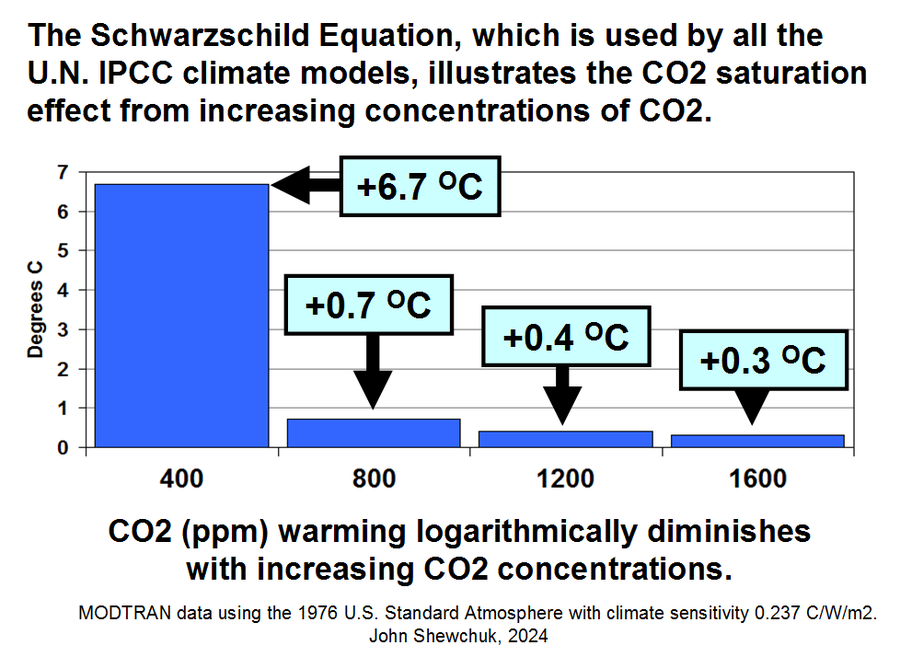
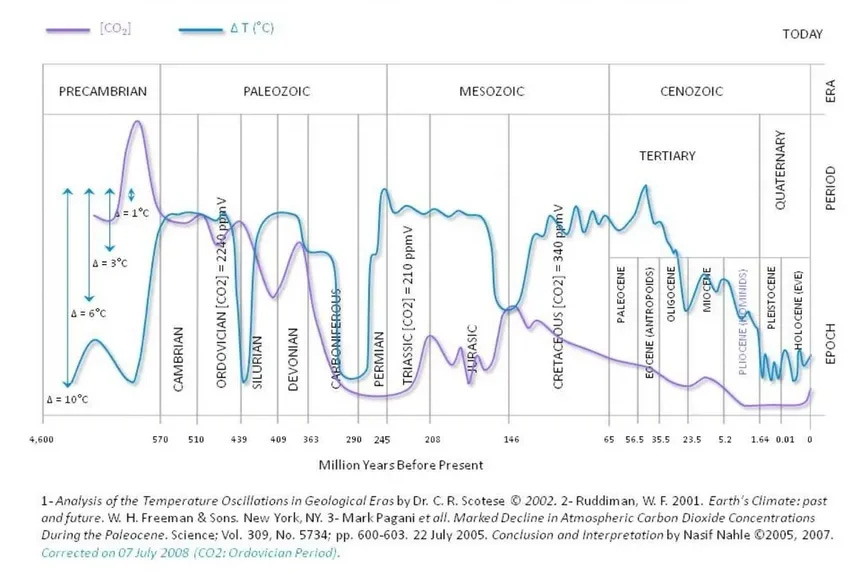
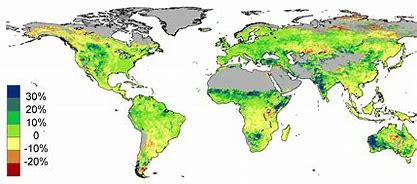
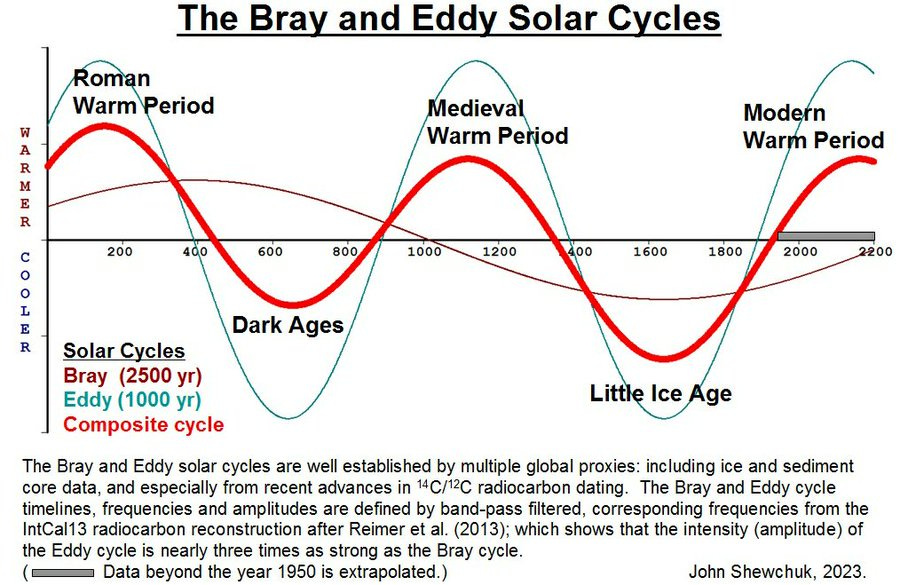
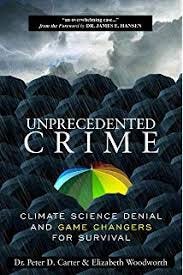
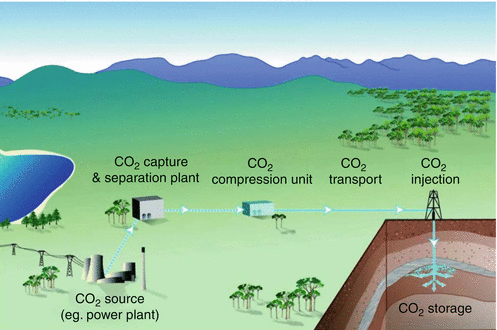
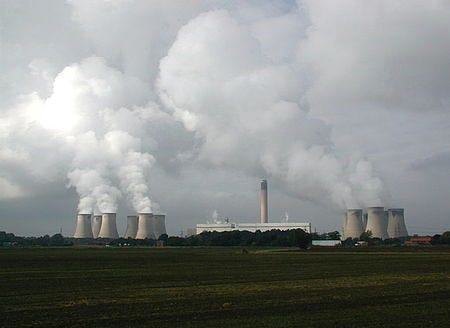
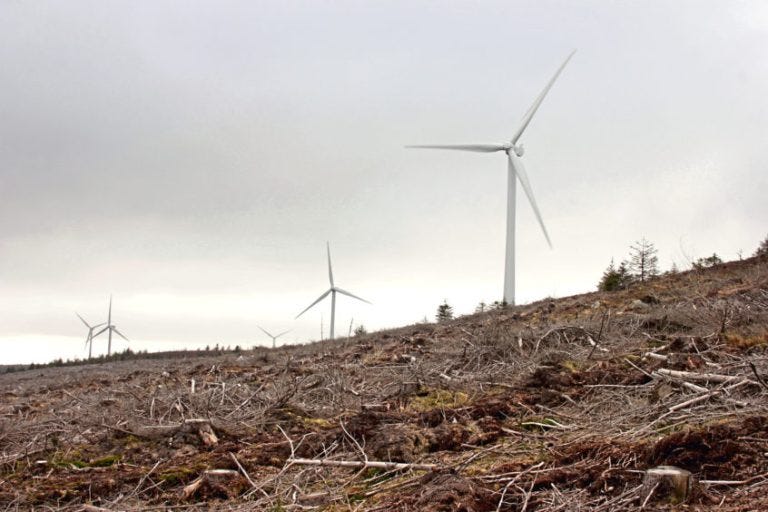



hey Paul! = ^]
here we have yet another powerfully sensible, knock-out punch. **scratches head, watches tumbleweeds blow by** but how is it that nobody (apparently) is here reading this stuff? is it just you and me in this here ghost town? fkn hell!
"But first, we must fight this war against madness and mockery." therein lies the rub, eh?
"this war" you are referring to is not the conventional "us vs. them" kind, is it? rather it is the war within each of us, love of power vs. love of life, silently raging & ever-present in ones' own heart and soul. you know, the one that pretty much nobody dares to stand and fight lest they uncover the demons within that whisper deadly-sweet lies that allow our minds to forever imagine that we are kind, caring, sensible beings when the truth is that we are anything but.
"never try to teach a pig to sing. it wastes your time and annoys the pig.", as the saying goes. all we can really do is sing and hope to touch hearts. that is, those wandering souls out there that may be on the fence about it all and open to the task of seeking deeper heart-based truths as the madness of our times leaves in our mouths its' foul & bitter taste. your writings, as you know, are music to my ears. just like we play songs again and again to feel their magic, so do i read your words.
Many a thank for this outstanding work! I am an archeologist and I wish every single one of my colleagues would recognise the importance of your text. In fact, for almost all so called scientific world this text should be the Gospel grade epiphany. Keep up with your research and evangelisation among heathens. God bless!